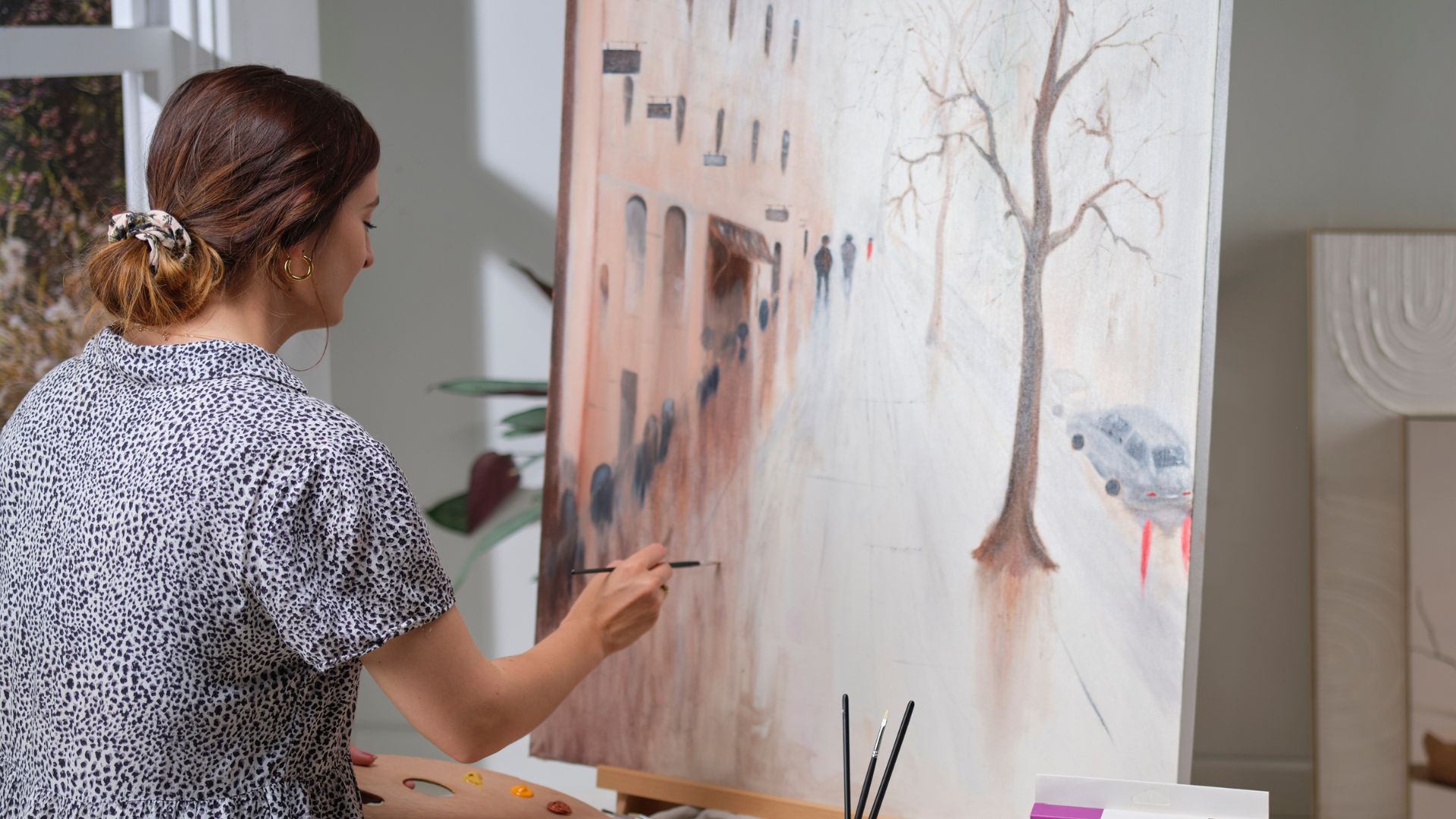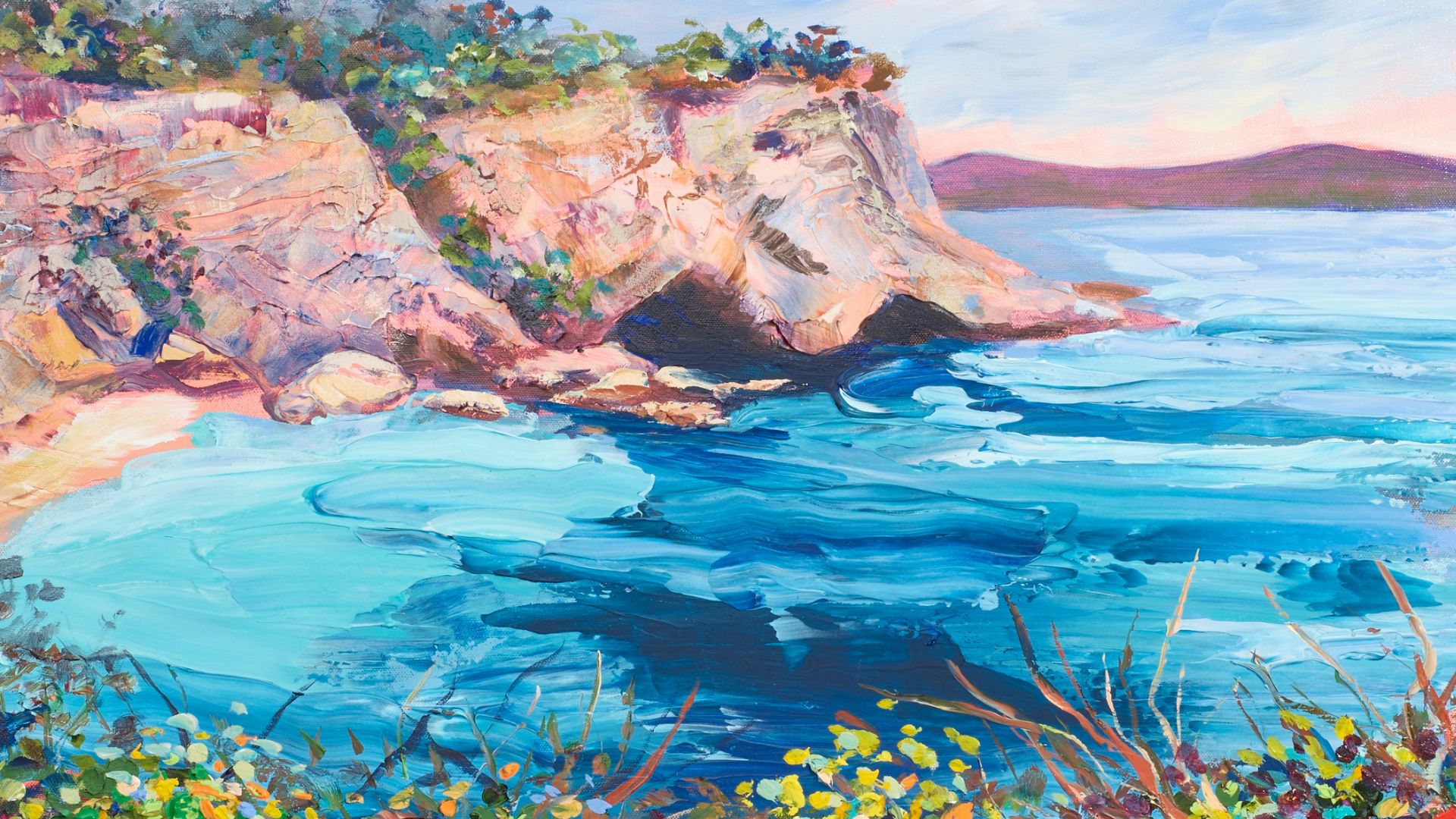 | ||
| Your browser is not supported. | ||
|
Please browse our site using any of the following options:
| ||
The Guide To Painting Shadows For Beginners

The Guide To Painting Shadows For Beginners
Adding shadows and highlights to your artwork may seem like an afterthought, but it's crucial to get them right if you want your artwork to have realistic depth and layers. But there's more to painting shadows than just slapping a little black and white paint around your canvas - in fact, there are quite a few rules to follow if you want your shadows and highlights to look natural
You can find all sorts of quality paints and mediums at Spotlight, but how can you use them to create art with shadows at home? This guide will take you through the basics of creating shadows and light with acrylic paint, with six tips to keep in mind as you work. And once you know how to paint shadows, you can take your painting game to the next level!
The Importance Of Painting Shadows And Lighting Your Art
If you hope to create realistic art depicting a person, object or scenery, then you'll need to know how light hits an object and creates shadows behind it - and how to express this in your painting. Art without shadows can look flat and shallow, while art without highlights can look dull and won't give the viewer's eye anywhere to start. Shadow painting isn't as scary as it seems, as you can observe different kinds of shadows all around you - take notice of how they look and form, and you'll be able to create realistic shadows in art whenever you paint.
6 Things To Keep In Mind When Painting Shadows
Here are six important tips to keep in mind when light and shadow painting for the first time:
Harsh light and soft light create different shadows
Shadows can have solid, distinct lines or soft, blurry ones, and which they have will depend on the strength and distance of the light that is causing the shadow to be cast.
For example, if you have a table lamp and hold your hand up under it, it will cast a distinct and dark shadow that is clearly defined. On the other hand, if a high downlight on the ceiling is creating the shadow, your hand's shadow will be soft with blurred edges.
Using this logic, think about scenes in nature that you might like to paint and how their shadows are cast. A cloudy, overcast day may cast a soft shadow over trees, but the clear noon sun will create clearly defined shadows on the ground that are easy to paint. Or a white LED light will create harsh shadows, but a flickering candle will create soft ones. Plus, objects that are closer to the ground will cast a more defined shadow than ones far away from it.
So when creating art with shadows, you'll need to think about the strength of your light source, its distance from your subject and your subject's distance from the ground.
Shadows in art aren't black
At first glance, shadows look black, but create a shadow right now and what do you see? Deep greys, and perhaps even darkened versions of the colours around you tend to make up the colours of a shadow, rather than just straight black.
Using a black created from colours is called chromatic black, and it's usually a better choice than black straight from the paint tube. A chromatic black is a blend of translucent colours on the darker side, such as Alizarin Crimson and Phthalo Green. When mixed, they will mimic the darkness of a black like Mars Black or Carbon Black, but with more saturation and some undertones.
You can create a chromatic black using colours from your painting in order to create a natural-looking shadow. So create a chromatic black made out of greens and purples for a forest scene, from blues and purples for an oceanic scene or from reds for an earthy scene.
When creating a shadow on your object (a form shadow, which we will cover later), use complementary colours to create a naturally-coloured shadow. This means getting out your colour wheel and making the shadow from the colour opposite to the main colour of your subject. So if you are painting an orange, then form your shadow out of dark blue paint. Or if you are painting an apple, form your shadow from dark green paint.

Light in art isn't always white
You will rarely use pure white for highlights in painting, except for very shiny spots like the twinkle in someone's eye or the edge of a glass tumbler. Instead, create your whites using blends of colours yellow, cream, pink and pastel shades. Try not to add too much white, as it can cause the highlight to lose vibrancy, and instead work with the colours on your palette to create a natural-looking highlight.
Plan your shadows early and add them at the right time
Shadows need to be planned, not just plopped on top of your art when you're finished - their various angles and light sources can cause havoc if you don't think about them early! There are two ways you can implement your shadows:
- Leave a blank space for your shadows and then paint them in later on. This involves carefully planning what your shadow will look like before you do any painting, and then painting around this space as you work on your art. Then when you are almost done, fill in the space with your shadow.
- Block your shadows on top of an existing colour with a transparent glaze. Using a transparent medium ensures your shadow will match the colours around and underneath it, without overpowering the rest of the scene. Make sure your painting is dry before adding this glaze, as you don't want the colours to mix and muddy together.
Either way, you'll want to have the shape and size of your shadow planned well in advance. Creating a light sketch before painting is a handy way to do this, as acrylic paint will completely cover any linework once you're finished.
Start shadow painting with a single light source
If you are new to painting shadows, it is best to start simple with a single light source in your painting. If you are painting from a real-life scene, this means avoiding spaces with multiple light sources. So stick to a scene with natural light or a scene lit by a single lamp or downlight. Once you've learned a little more about how to paint shadows, you can add an extra lamp or light to the scene for added difficulty.
Form shadows vs cast shadows
Did you know there are two types of shadows you need to think about when painting art with shadows? Form shadows have a soft edge and are the shadows on the object itself, which will form on the side opposite to where the light is hitting the object. Cast shadows have a hard edge and are cast onto the ground by the object, on the opposite side to where the light is hitting.
When painting form shadows, you will need to blend and make use of complementary colours to create a natural-looking shadow on your object. While with cast shadows, you can use a chromatic black to create a hard-edged shadow at an angle to your chosen object.

Hone Your Shadow Painting Skills With Spotlight
Now that you know the basics of how to draw shadows, it's time to grab your art supplies from Spotlight! Find a great range of acrylic paint, paintbrushes and canvases online, where you can pay your way and have your entire order delivered to your home. Alternatively, visit your nearest Spotlight store and our friendly team will help you find the perfect painting supplies for creating art with shadows.
If you love to paint, why not check out some of our other painting blogs? Our how to paint with gouache, flow painting and acrylic painting techniques articles are a fun read and can help you learn the basics of many different painting styles. And read our paints & mediums and paintbrushes buying guides to ensure you are making the right choices before purchasing.




